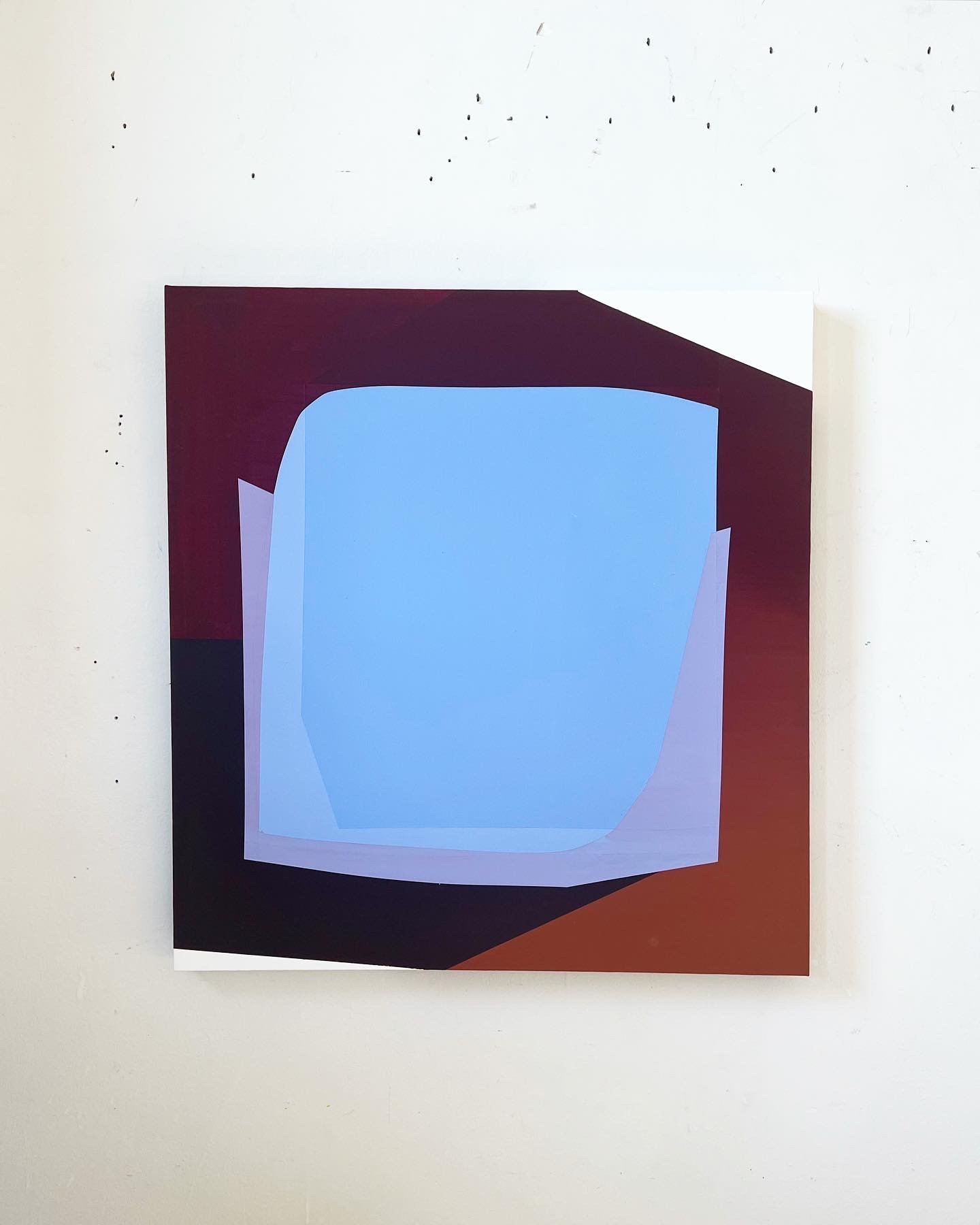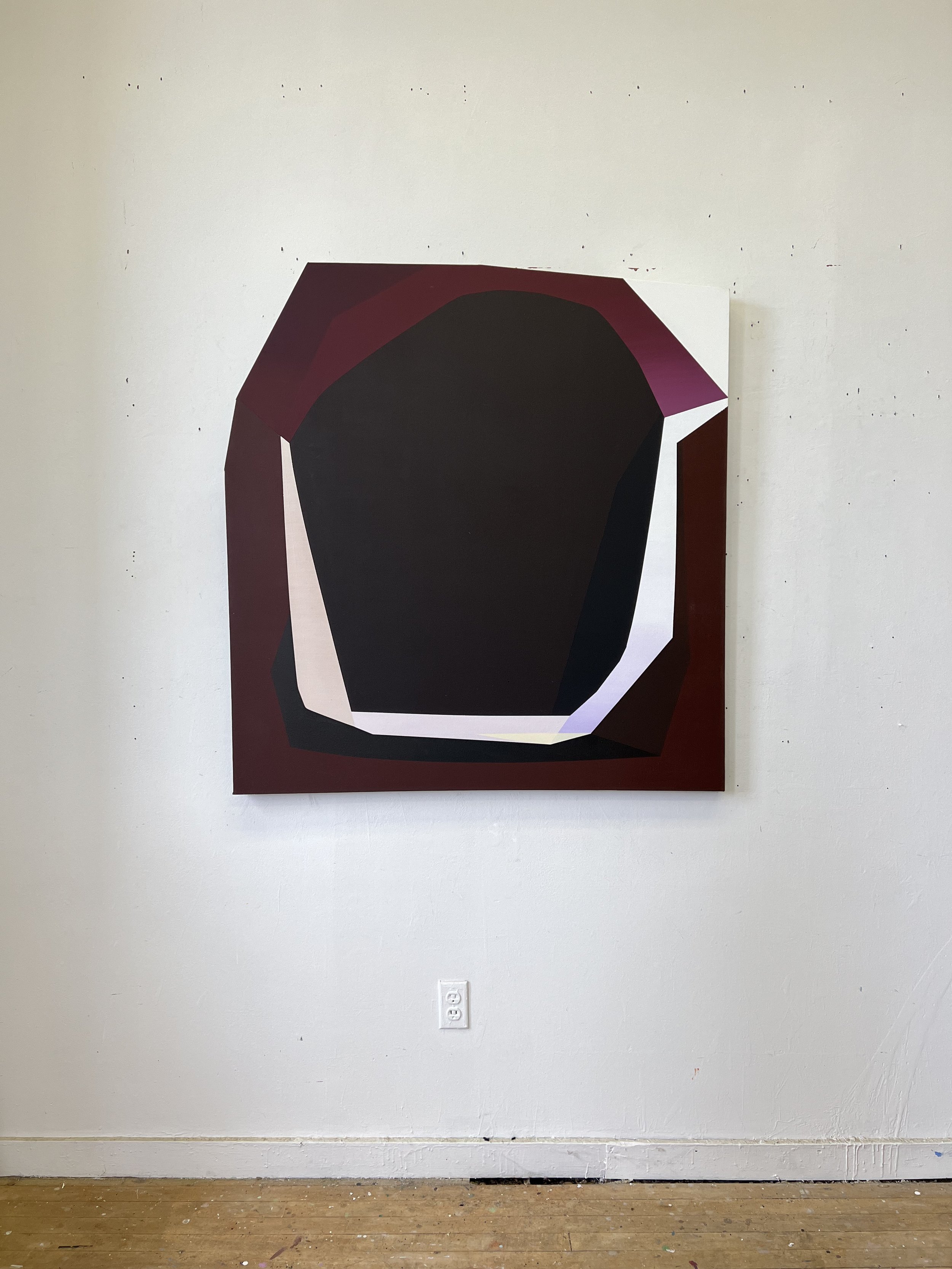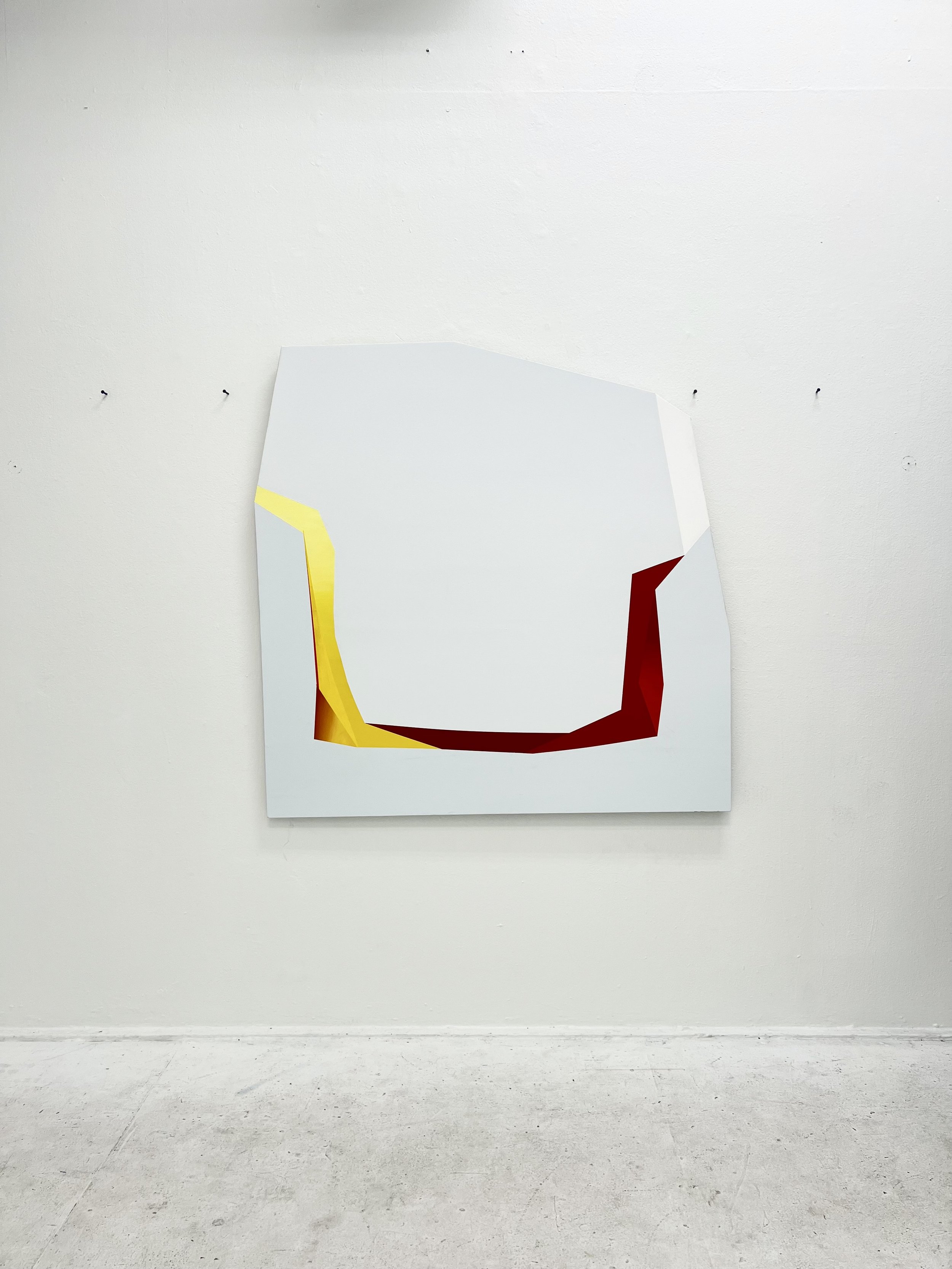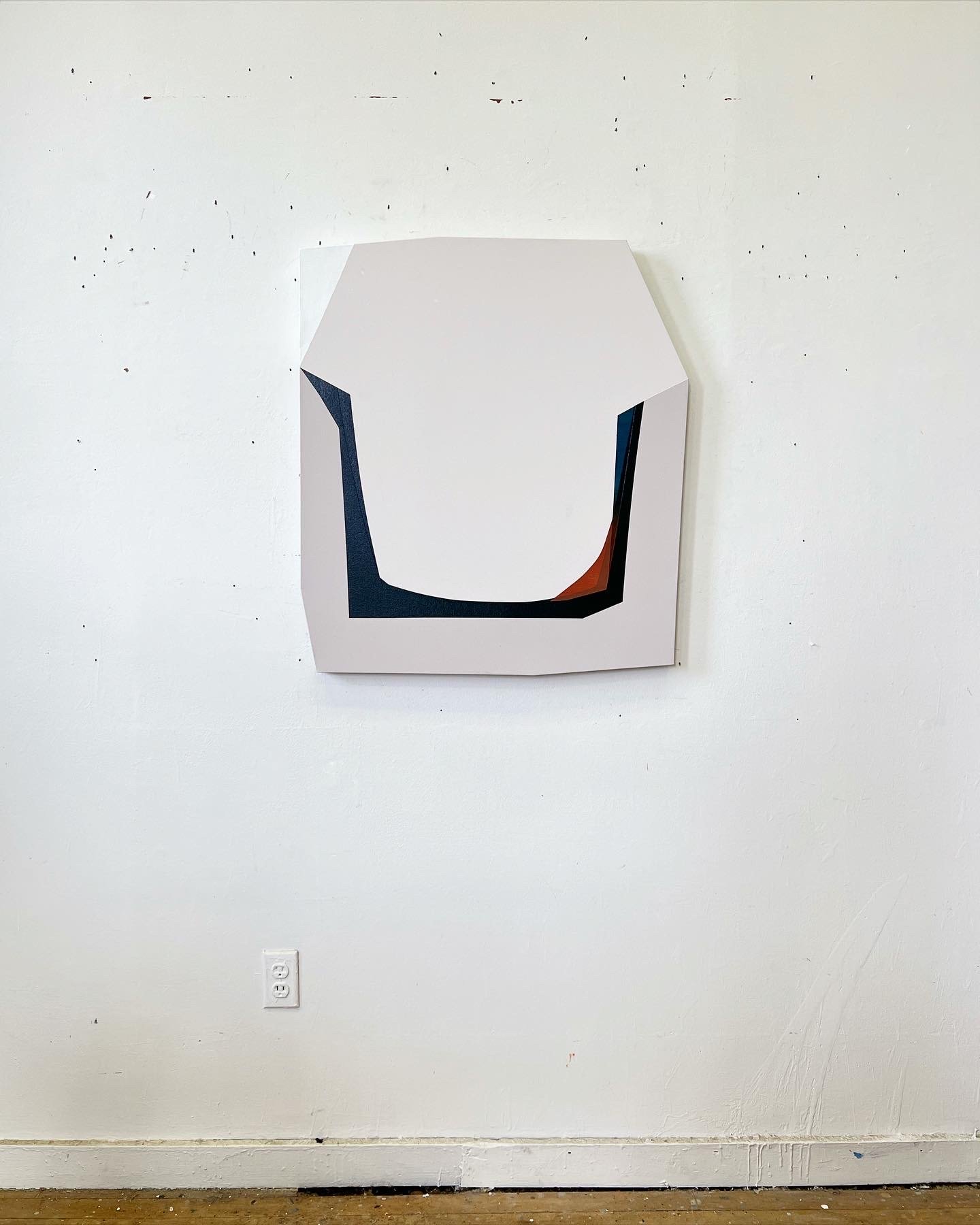Cool. Composed. Elegant. Minimal. Visually appealing. Balanced. Intriguing. Lightly humorous. Sophisticated. Reserved, in the sense that perhaps you should not necessarily expect your curiosity to be satisfied.
Are we talking about the art that Emma Childs creates…or Emma herself?
It’s rare that I feel a brush of intimidation in an interview. People, after all, are people. But here in Emma’s presence I feel a bit holy MOMA, Batman, this young artist is going to be famous. Like, really famous. It’s as if we’re standing just inside the starting gate, watching her every stride lengthen as Emma gains momentum.
And yet, with all that future-famousness of her work looming and the pressure that can bring, Emma seems a perfect foil for her work: equally cool, equally composed, equally balanced, discussing her both her paintings and her still-nascent but quickly-blossoming career with astonishing maturity.
She may have an idea behind each of her very sculptural paintings, but Emma prefers not to tell you what it is. Why, she questions, should her understanding of the emotions or her experience of the piece overlay your own relationship with it? Why should Emma’s sense of what the painting conveys hijack your interpretation?
She is right, too: if Emma yields and shares with us that that a particular piece represents a struggle between two friends, or a need to grow faster than one feels ready, it will always be that thing to the viewer—so, while it may be frustrating to not get the ‘answer,’ in the end, Emma’s inclination is more generous; better to leave the painting open for each viewer to apply their own interpretations. Emma’s deliberate reserve matches the painting’s abstract reticence…whether that reticence shines with vivid color or is stark, bold black-and-white.
Chatter #6 by Emma Childs
Unlike many artists who feel the call from a young age, Emma first engaged with art in high school. “I wasn’t one of those people who was passionate about school or about learning…not one of those who knew what they wanted to do in college and beyond,” she relates. But art classes at Garrison Forest School piqued her interest, and mentor-teacher BJ McElderry encouraged the talent she saw in Emma. A stint at College of Charleston followed, and then MICA--and shows happened quickly after.
That was three short years ago, but already Emma’s work has received significant, serious recognition. She takes it all in stride, the good with the bad. “I decided early on to take any criticism or challenge in a way that would build me up rather than knock me down.”
Who teaches a young person to be that mature? Emma is quick to credit her parents, a therapist mother and an architect father. Their influences marry the conceptual experience of her work—colors, color theory, feelings—with the technical aspects of designing each piece.
Emma likes to make things simple and complicated at the same time. Appropriate, since many of her paintings reference human states of being. Emma tries to depict an experience in the most minimally possible representation, having each painting serve as a visual metaphor for complex human relationships by paring them down to simple shapes and colors and composition.
But within that constraint, paintings which may seem quite simplistic as online images, display far more complexity when viewed in person. Layers become visible. Matte surfaces interact with the sheen of acrylics. What you see of colors and surfaces changes as you walk around the painting.
A large U-shaped feature is one of Emma’s favorite elements, often repeated in her work. It connects a top shape and a bottom shape, the top expressing one energy and the bottom another, while the curved shape speaks of the energy between the two.
Lifeline by Emma Childs
You’ll be wanting an example here: how might one—using the simplest possible elements—represent a caring relationship between one person and another? How can forms and colors indicate the feeling of being hurt by someone, or of being supported by a friend in a time of challenge? How can texture and hue resonate with a state of being?
Consider another example: an already-electric color in the middle of a canvas is emphasized even more by neutral darks surrounding the color. The piece expresses the state of feeling safe: safe to grow, to become something more, because of a solid support around you.
When Emma talks about her pieces this way, giving the smallest clues, her already stunning paintings take on ever more presence.
But with cool, composed, lightly humorous words (see opening qualities above), Emma makes the complicated simple.
“Just stand and look at the work on the wall, and calm down and check in with yourself about how it makes you think, how you feel about what it’s doing,” she says. “And also, know this: it’s okay to just like how it looks.”
I do like how her work looks. A lot…and so, it seems, do plenty of other people. Watch this space, my friends.
Emma Childs’ exhibit will be at the Manor Mill, a laid-back gallery in an historic grist mill, from February 4 to February 26. For added inspiration, the Mill is hosting At The Center of Food and Art, a celebration of fine art and fine food featuring comments by Emma and fellow artist Penn Eastburn on February 18. Click here for tickets.
By Katie Aiken Ritter
Instagram: @KatieRitterVikingWriter
Contact
gallery@manor-mill.com
Instagram: @manormillgallery
















